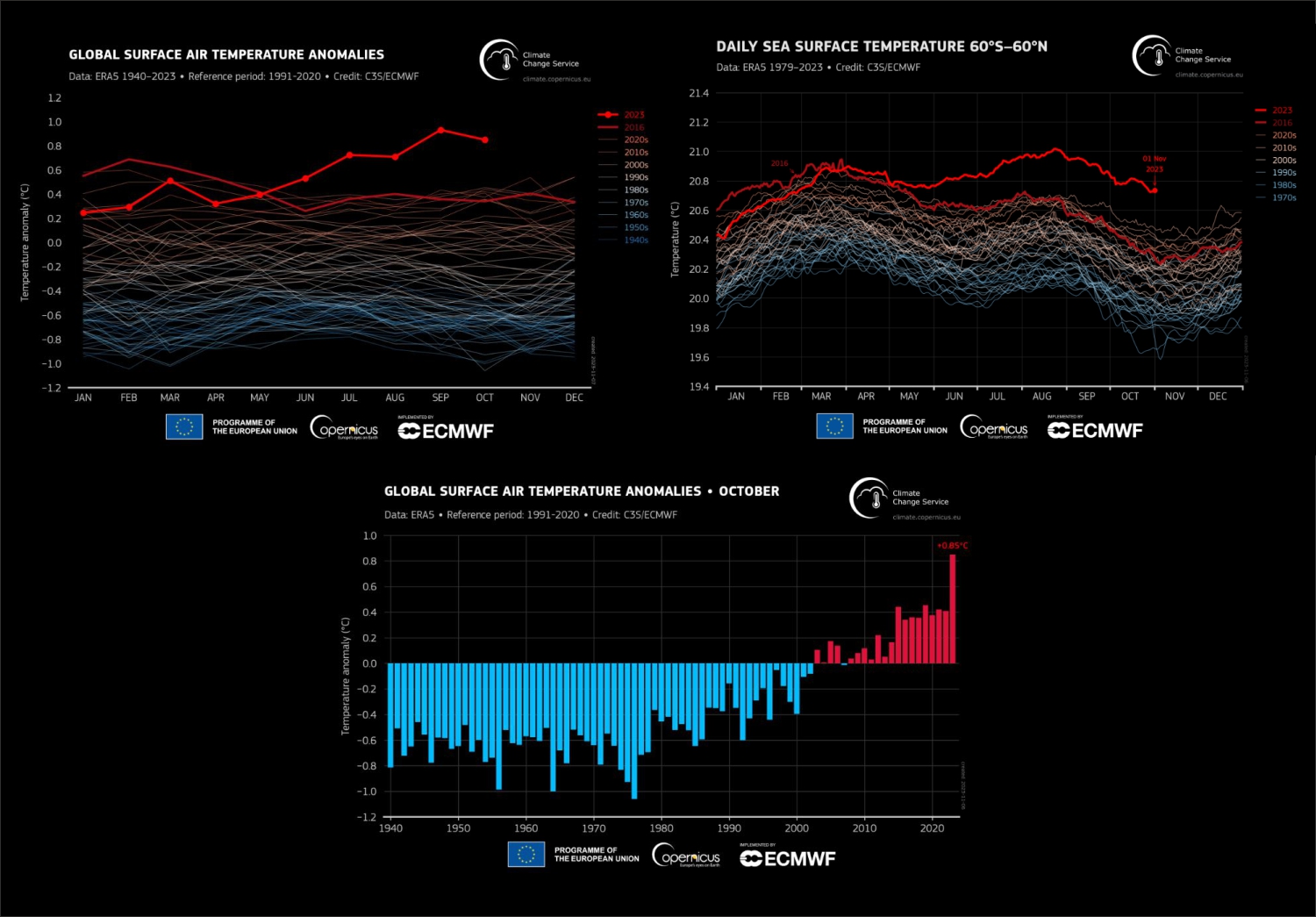In October 2023, the world experienced an unprecedented heatwave, setting new records and sounding an alarm for our climate. The global average surface air temperature for the month reached 15.30°C, surpassing previous records by 0.85°C compared to the 1991-2020 October average and 0.40°C higher than the previous record set in 2019. This marks the warmest October ever recorded on a global scale.
Notably, October 2023 stands out as the second-hottest month in the ERA5 dataset, second only to September 2023. Furthermore, it revealed a stark contrast when compared to the pre-industrial era, with temperatures 1.7°C warmer than the estimated October average for 1850-1900.
The year 2023 has seen consistently rising temperatures, with a global mean temperature for the period from January to October reaching record levels. It is now 1.43°C above the pre-industrial average of 1850-1900 and exceeds the previous record holder, the ten-month average for 2016, by 0.10°C.
For Europe, October 2023 was the fourth warmest October on record, with temperatures 1.30°C higher than the 1991-2020 average. On a broader scale, sea surface temperatures reached a new high in October, with an average of 20.79°C between 60°S and 60°N.
Moreover, the effects of climate phenomena like El Niño are still visible, albeit at lower levels than those experienced during the historically strong events of 1997 and 2015 in the equatorial Pacific.
Samantha Burgess, Deputy Director of the Copernicus Climate Change Service (C3S), underlines the gravity of the situation, stating, "October 2023 has seen exceptional temperature anomalies, following on from four months of global temperature records being obliterated. We can say with near certainty that 2023 will be the warmest year on record, and is currently 1.43ºC above the preindustrial average. The sense of urgency for ambitious climate action going into COP28 has never been higher."
In the realm of sea ice, October 2023 brought concerning trends. Antarctic sea ice extent remained at record low levels for the sixth consecutive month, 11% below the average for this time of the year. Meanwhile, Arctic sea-ice extent reached its 7th lowest value for October, at 12% below average.
Hydrologically, the world experienced a complex mix of conditions. Above-average precipitation was observed across most of Europe, driven by storms Babet and Aline, causing flooding and damage. Outside of Europe, many regions, including the southwest of North America, parts of the Arabian Peninsula, Central Asia, Siberia, southeast China, Brazil, New Zealand, and southern Africa, saw wetter-than-average conditions, often triggered by cyclones.
Conversely, drought conditions prevailed in the southern USA, parts of Mexico, central and easternmost Asia, and the extratropical southern hemisphere, including Australia.
These climate events collectively underscore the pressing need for immediate and ambitious climate action as we move forward. The effects of global warming are increasingly evident, and it is crucial to address this challenge urgently as we head into COP28.
Source:Copernicus
Related news
Climate Change a Defining Issue of this Century!
Urgency of climate change unites scientists in the Arctic
The tags below provide an opportunity to view previously posted related news within the selected category

